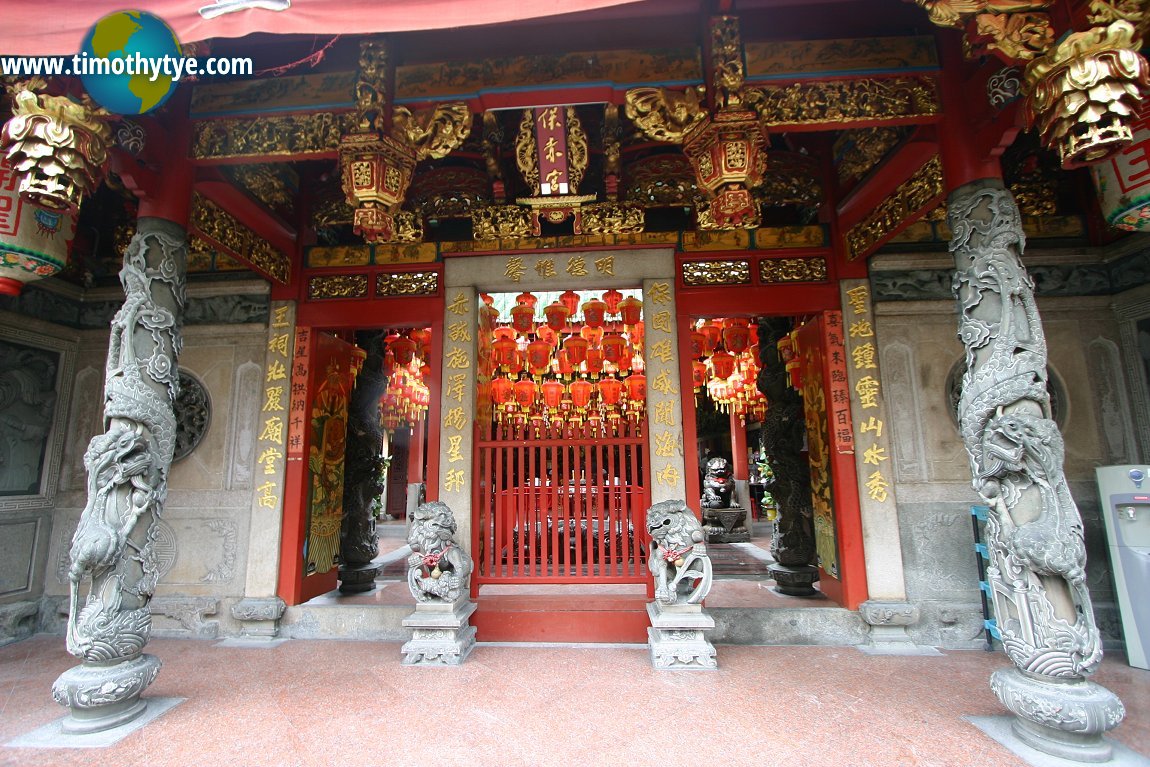 Tan Si Chong Su Temple (10 July 2006)
Tan Si Chong Su Temple (10 July 2006)
Tan Si Chong Su Temple (GPS: 1.2894, 103.84285) is a Chinese temple located at Magazine Road in the Singapore River Planning Area, within the Central Area, Singapore's Central Business District. It is also called Po Chiak Keng (保赤宫) as well as Tan Seng Haw. An ancestral temple of the Tan Kongsi, the clan association of Chinese people surnamed Tan, the Tan Si Chong Su was constructed between 1876 and 1878.
The Tan Si Chong Su was originally located by the banks of the Singapore River. The Tan clan originally settled along the south bank of the Singapore River, close to a small islet called Pulau Saigon. Pulau Saigon has since been dug out and part of the river filled in, causing the Tan Si Chong Su Temple to now be located away from the river.
Entering Tan Si Chong Su, one passes three brightly painted timber double-leafed doors framed with carved granite columns at the elaborate entrance hall. There are eight plaques bear greetings and good wishes in calligraphic script. Five of these plaques date from 1880 and three from 1898.
Beyond the entrance hall is the prayer hall, known to worshippers as Po Chiak Keng. Statues of a few major deities rest behind an antique altar, above which hangs an 1898 plaque that reads "Help the world and the people".
Behind the prayer hall is the ancestral hall. It is set 90 metres back from the entrance hall. Here, one can see the Tan Ancestral Tablets displayed in three glass niches and on the walls. There are five plaques extolling praises to revered ancestors. The ancestral hall occupies the most important position in the temple, reflecting the reverence to ancestors. The layout of the Tan Si Chong Su is based on the Chinese concept of li, which means "to humble oneself to honour others".
The Tan Si Chong Su was built accoridng to Southern China architectural style. This is most apparent from the graceful sweep of the curved roof ridge enhanced with upturned eaves, wooden carvings and ornamental gable eaves set in granite columns.
The two most prominent Tan personalities in Singapore, Tan Kim Ching (1824-1892) and Tan Beng Swee (1828-1884) were the prime spearheaders in getting the Tan Si Chong Su constructed. Tan Kim Ching was the eldest son of philanthropist and businessman Tan Tock Seng, whose significant fortune he inherited. Tan Tock Seng is perhaps best remembered for his contributions to public health care. Tan Beng Swee was the son of Tan Kim Seng, another successful businessman and a leader of the Chinese community, and best remembered for setting up Singapore's water supply lines.
Tan Si Chong Su also served as the assembly hall for the Tan clan beyond Singapore and into Malaysia. Among the most illustrious Tans include the Tan Siew Sin, a former Minister of Finance in Malaysia, and his father Tan Cheng Lock, the founder of the Malayan Chinese Association, a political party in Malaysia. Tan Cheng Lock and Tan Siew Sin were from Malacca as were the fathers of the temple's original founders, Tan Kim Ching and Tan Beng Swee. Another famous Tan is Tan Chin Tuan, a retired banker and noted philanthropist and one of the temple's trustees.
In 1889, the Po Chiak Keng School was set up within the temple's premises. As a result, the locals began to refer to the temple by the name Po Chiak Keng as well. Tan Si Chong Su was known by both names until the Japanese invasion of 1942, which resulted in the closure of the school, and the temple's name reverting to Tan Si Chong Su.
Tan Si Chong Su Temple underwent repairs in the 1980s, and with government assistance, a full restoration was carried out in 1994.
Tan Si Chong Su Temple was gazetted a National Monument of Singapore on 29 November, 1974.
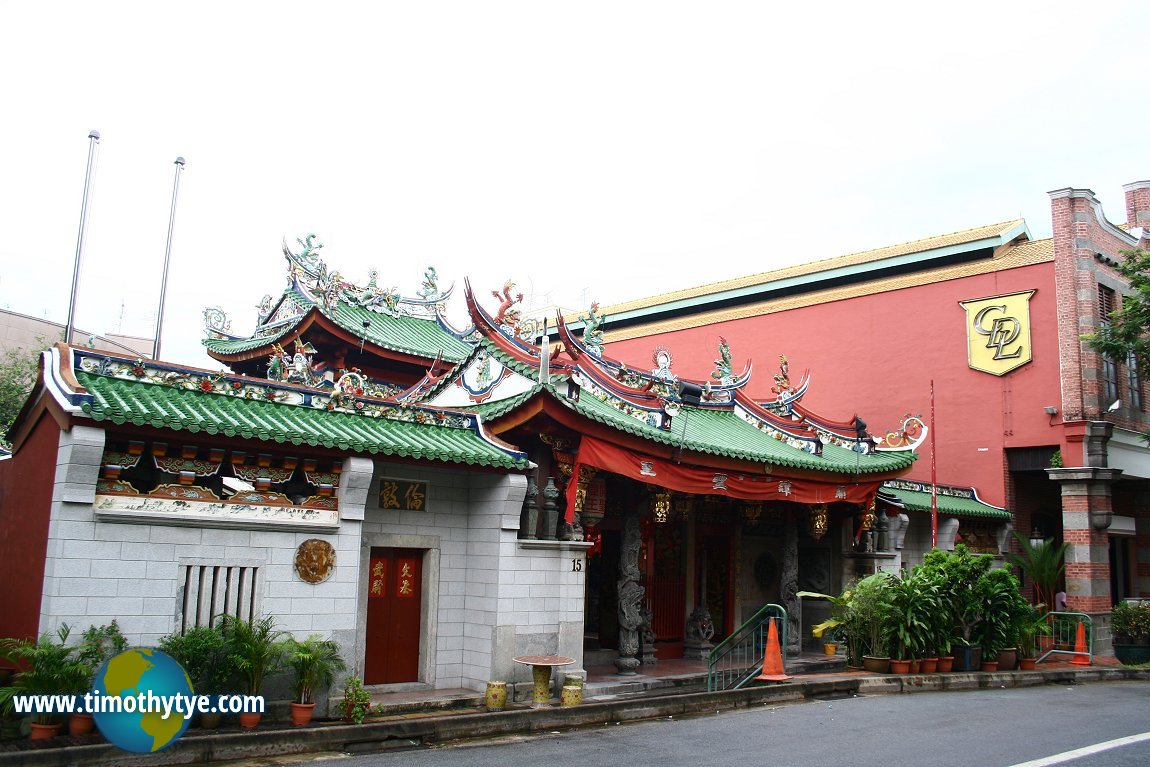 The frontage of Tan Si Chong Su Temple (10 July 2006)
The frontage of Tan Si Chong Su Temple (10 July 2006)
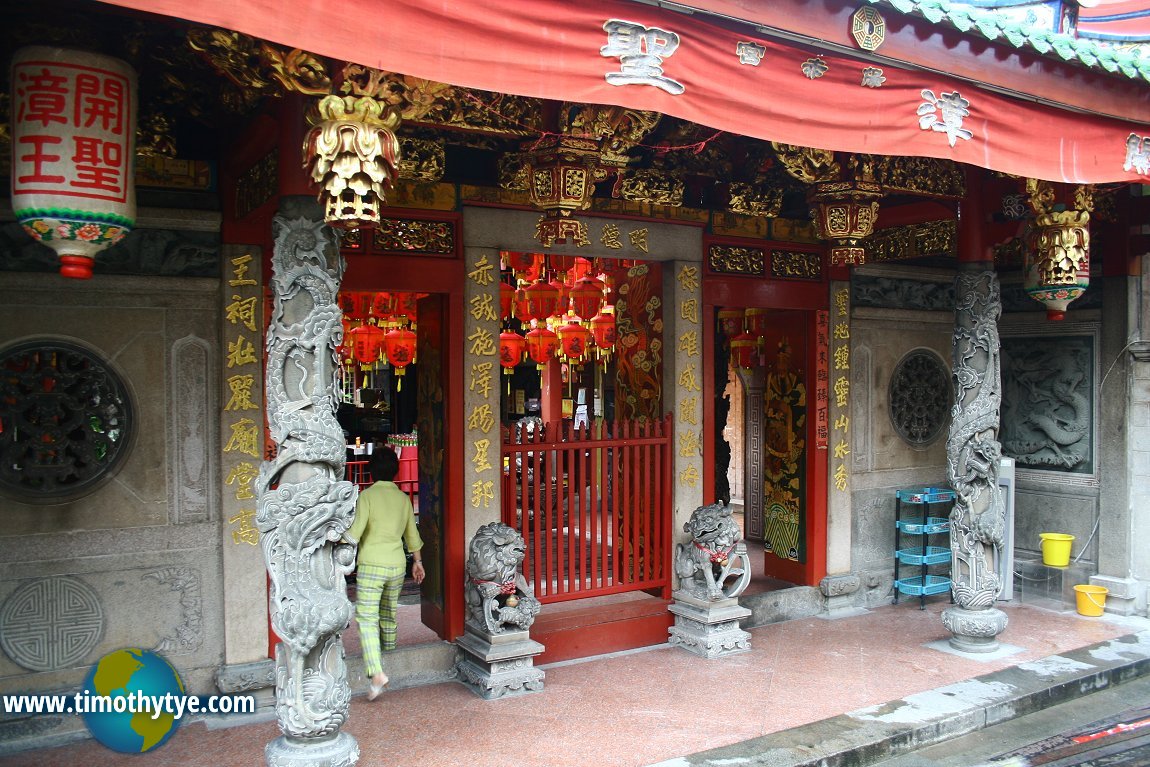 The front entrance of Tan Si Chong Su Temple (10 July 2006)
The front entrance of Tan Si Chong Su Temple (10 July 2006)
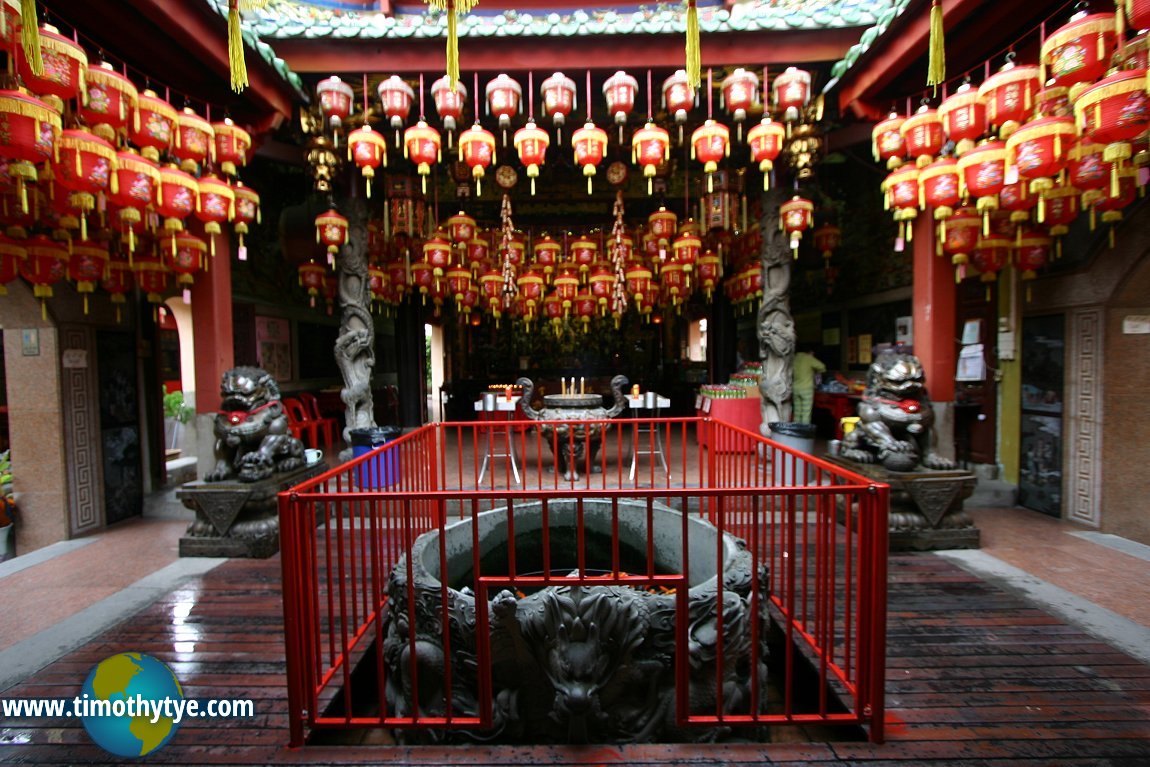 Tan Si Chong Su Temple (10 July 2006)
Tan Si Chong Su Temple (10 July 2006)
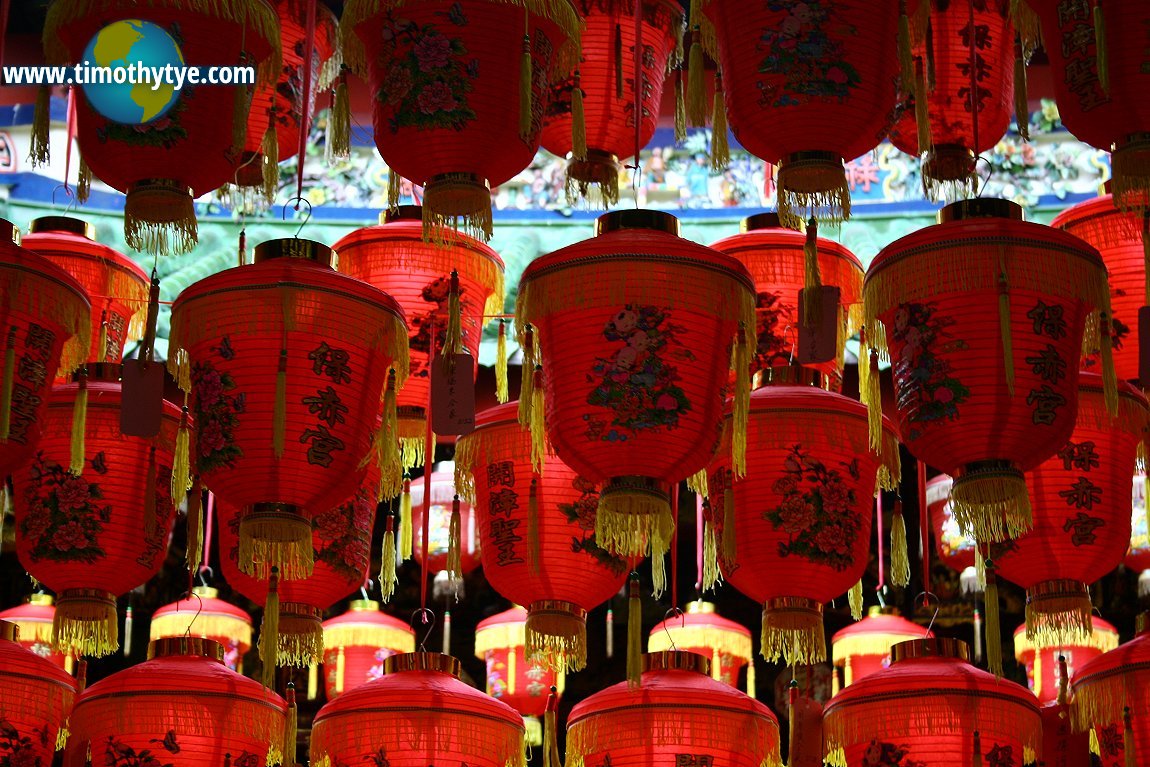 A multitude of lanterns hanging in Tan Si Chong Su Temple (10 July 2006)
A multitude of lanterns hanging in Tan Si Chong Su Temple (10 July 2006)
Address
Tan Si Chong Su Temple15 Magazine Road,
Singapore 059568
Going to Tan Si Chong Su Temple
Tan Si Chong Su Temple is on Magazine Road. The nearest MRT Station is the Clarke Quay MRT Station (NE5).Tan Si Chong Su Temple is  on the Map of Chinese Temples in Singapore
on the Map of Chinese Temples in Singapore
List of the Chinese Temples in Singapore; Discover Singapore
 Copyright © 2003-2025 Timothy Tye. All Rights Reserved.
Copyright © 2003-2025 Timothy Tye. All Rights Reserved.
Copyright © 2003-2025 Timothy Tye. All Rights Reserved.

 Go Back
Go Back